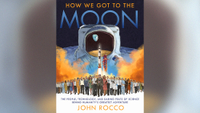'How We Got to the Moon': Author John Rocco retells the true story of Apollo 11 with amazing art and science
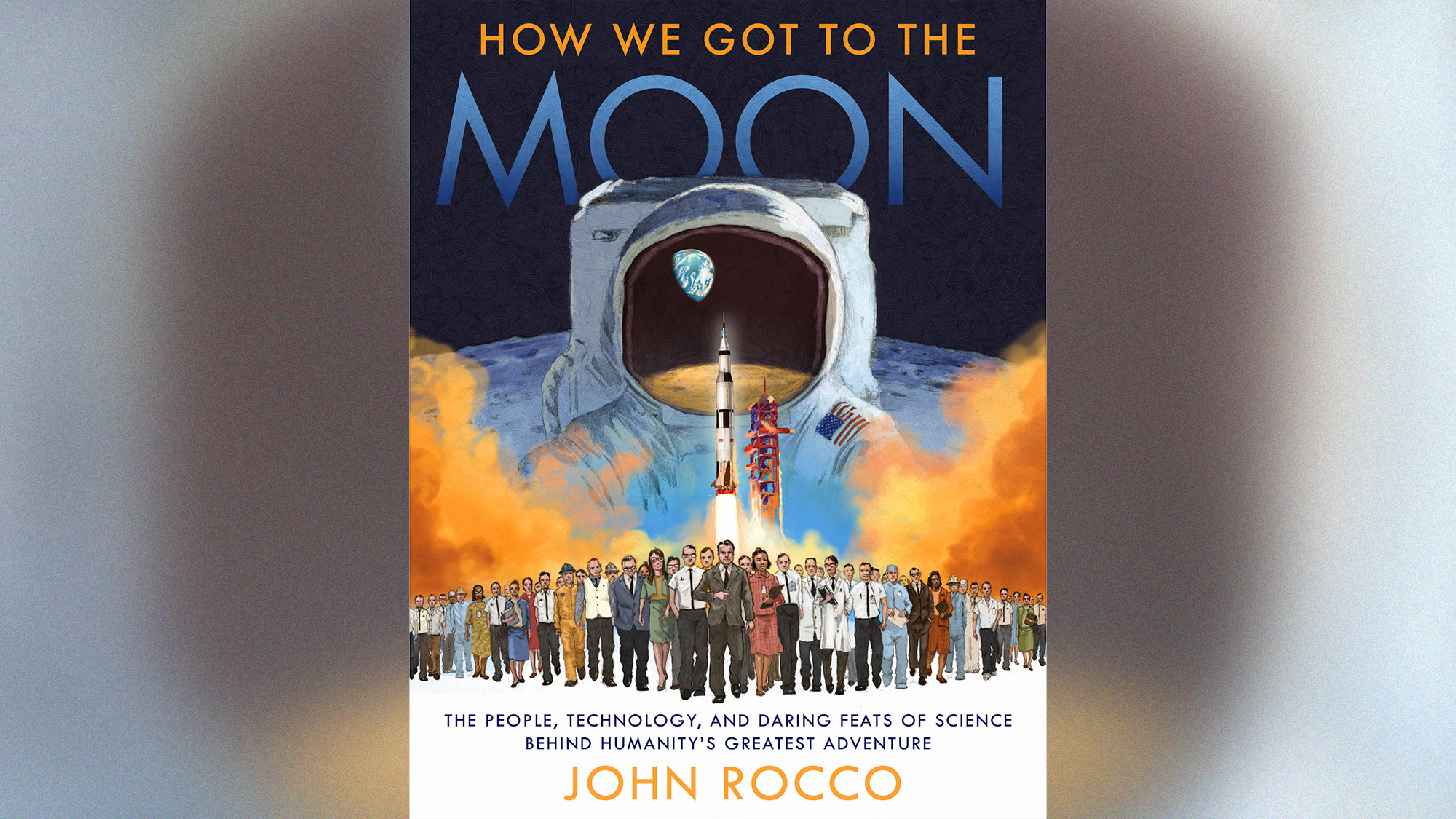
"How We Got to the Moon", out today (Oct. 6) peels back the curtain to expose the true story of NASA's Apollo program and how people from all walks of life worked together to accomplish the impossible.
The new children's book, fully titled "How We Got to the Moon: The People, Technology, and Daring Feats of Science Behind Humanity's Greatest Adventure" (Random House Children's Books, 2020) and written and illustrated by New York Times bestselling author and illustrator John Rocco, who wrote and illustrated "Blackout" and illustrated the famed series "Percy Jackson," goes on sale today (Oct. 6).
The book takes an immersive approach to NASA's "moonshot" Apollo program, exploring the science behind the Apollo 11 journey and introducing some of the people who made the first crewed moon landing possible.
"I wanted to make a book that I would have loved as a kid as a kid … and even as an adult," Rocco told Space.com. He marveled that NASA's Apollo 11 team landed humans on the moon "with the lack of technology that we have today. And just kind of through sheer grit, determination and cleverness, figured out how to do this amazing thing."
Reading Apollo 11: The best new books about the US moon landings
How We Got to the Moon by John Rocco | $29.99
This new children's book, written and illustrated by New York Times bestselling author and illustrator John Rocco, goes on sale today (Oct. 6).
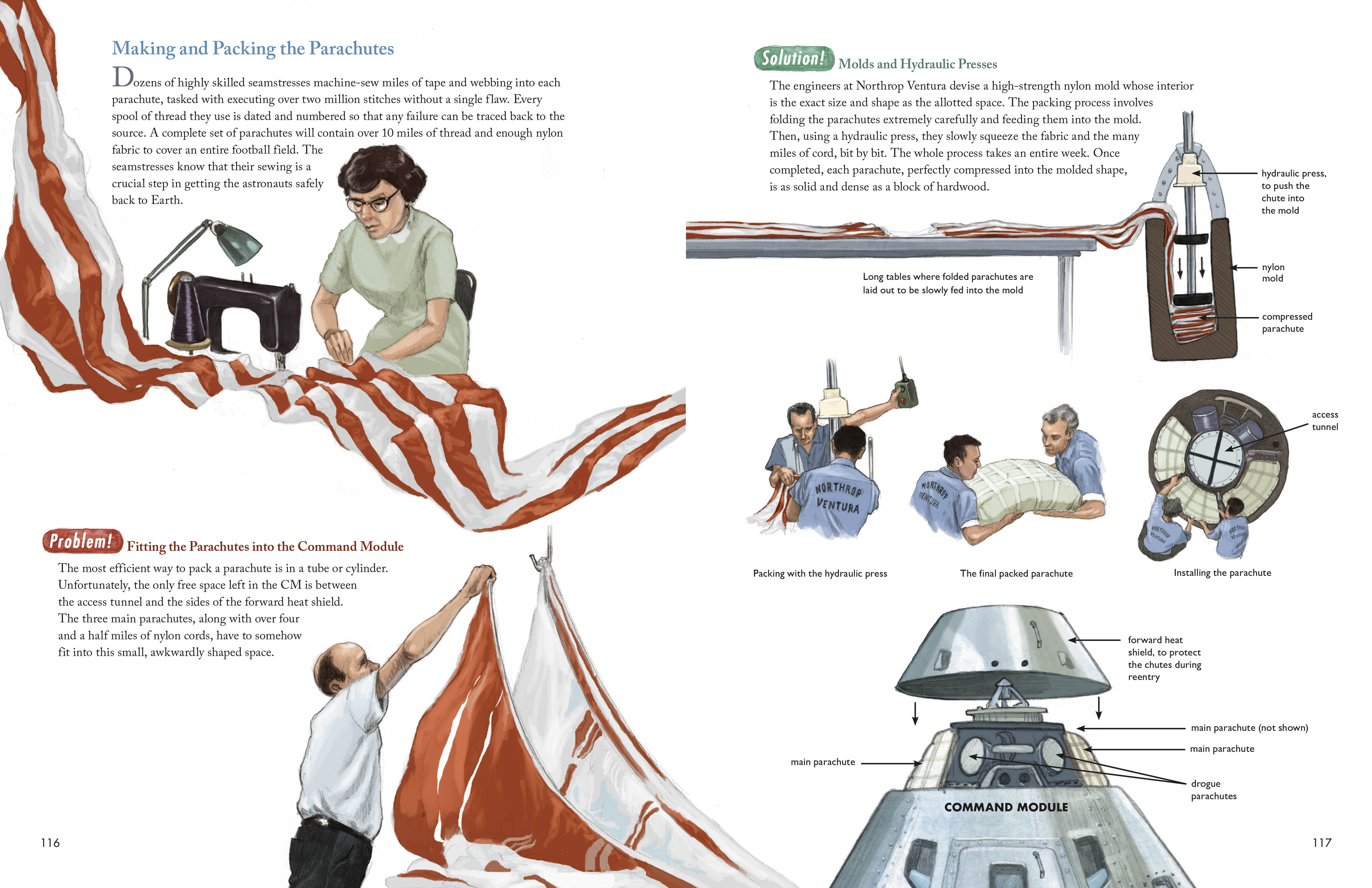
Stretching all the way from Sputnik to the Apollo 11 launch, the book encompasses history, science and storytelling, Rocco said. In addition to exploring the history of the first moon landing and the people who made it happen, Rocco also wanted to give important scientific context for readers so that, by the end of the book, they had a real idea of how the moon landings were accomplished. The book visually explains concepts like gravity, how rockets launch, Newton's laws of motion and more.
While many of the scientific details of humanity's voyage to the moon are pretty complicated, Rocco worked to break down even the most technical aspects of Apollo 11 for his audience.
Get the Space.com Newsletter
Breaking space news, the latest updates on rocket launches, skywatching events and more!
"For young readers, it gets completely lost," he said of the science behind spaceflight. "When you're talking about things like orbital mechanics and trajectories and heat transfer, you know, thermodynamics, all that stuff can glaze people over pretty quickly, unless they're engineers, or chemists and scientists. And so I wanted to present this information in a way that's accessible."
Slideshow: How NASA's Apollo astronauts went to the moon
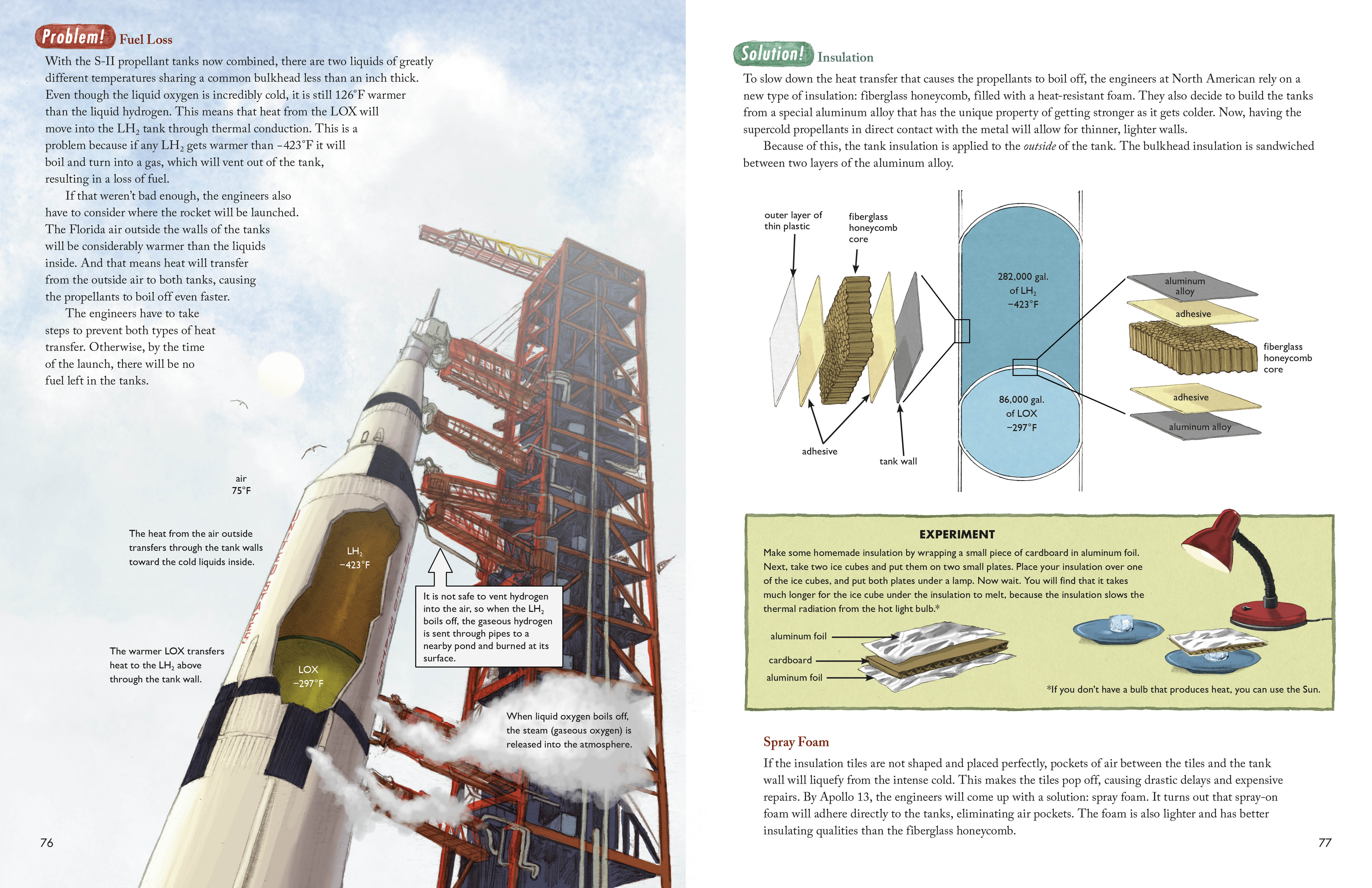
The faces of Apollo
Because Rocco is an award-winning illustrator, one of the most obvious facets of "How We Got to the Moon" is the beautiful illustrations that grace every page. These drawings show, through detail and artistry, everything from the components of rockets to the many faces of NASA's Apollo program.
Rocco made sure to include a wide variety of people in the book, incorporating both famous faces and those who, while not household names, were vital members of the mission team. Their faces grace the pages of the book and it's exciting not just pointing out and finding familiar faces, but also getting to know those behind the scenes.
Such characters include the women who trained as part of the "Woman in Space" program, Belka and Strelka (two dogs who flew as part of the Soviet space program), geologist Farouk El-Baz who helped to plan the exploration of the moon as part of Apollo, project engineer Dorothy B. "Dottie" Lee who worked on the Command Module heat shield, spacesuit seamstresses, flight crew equipment engineer Ann D. Montgomery as well as mathematician Katherine Johnson, whose inclusion in the 2016 hit book and film "Hidden Figures" brought her story to light.
One detail that Rocco did not include, in explaining space travel pioneer Wernher von Braun's contributions to human spaceflight and rocket technology, was von Braun's relationship with the Nazi party. For a period of time, von Braun worked in Nazi Germany's rocket development program. "At the end of the day, I felt like it was a distraction," from the main story, Rocco said.
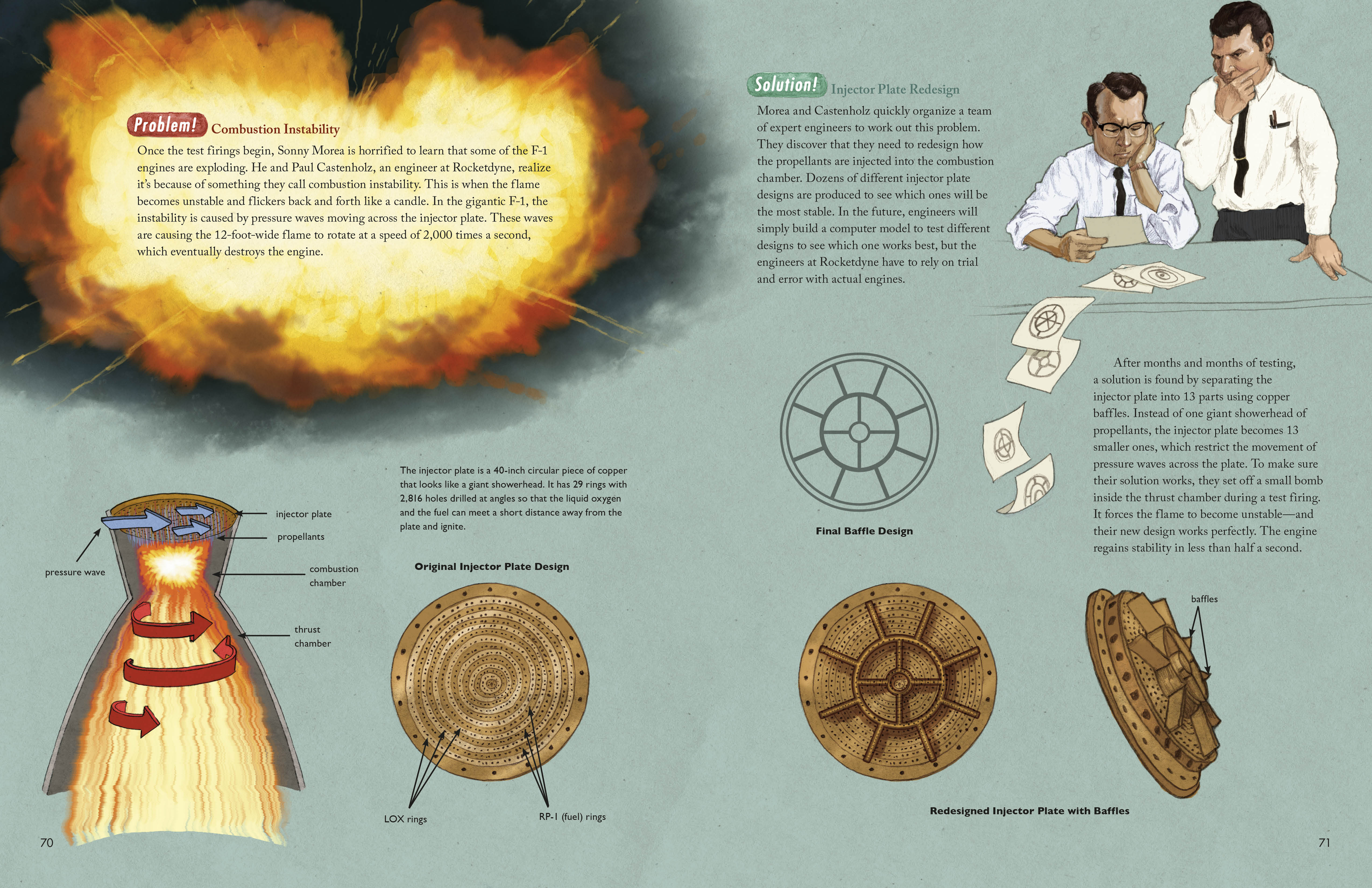
From the horse's mouth
Rocco pulled from five decades of records stemming from the 1969 mission, but he didn't just rely on existing documentation. He also reached out to people who worked on the mission and spoke with them, getting their firsthand account of what it was really like working to land the first humans on the moon.
The first person Rocco spoke with was Don Rethke, known as "Dr. Flush," who helped to create the first-ever space toilet for the Apollo program. Rethke showed his personal collection of Apollo gear to Rocco, telling him all the ins and out of how he contributed to the Apollo program and explaining how the Apollo 11 life support system worked.
Rocco found the experience so powerful that he decided to keep reaching out to Apollo engineers and personnel to learn the details of their lives and work at NASA. "I reached out to as many people as I could, as I was reading these stories and uncovering stories, and talking to them firsthand," Rocco said. Ultimately, Rocco was in contact with nearly 30 Apollo personnel, he added.
"By the time I started the second draft of my book, I had two dozen plus engineers on speed dial," Rocco said. He added that not only were the engineers he interviewed for the book helpful in putting the pieces of history together, in explaining the technical details of the mission to Rocco, they helped him to understand how the mission came to be on a deeper level.
Email Chelsea Gohd at cgohd@space.com or follow her on Twitter @chelsea_gohd. Follow us on Twitter @Spacedotcom and on Facebook.
Join our Space Forums to keep talking space on the latest missions, night sky and more! And if you have a news tip, correction or comment, let us know at: community@space.com.

Chelsea “Foxanne” Gohd joined Space.com in 2018 and is now a Senior Writer, writing about everything from climate change to planetary science and human spaceflight in both articles and on-camera in videos. With a degree in Public Health and biological sciences, Chelsea has written and worked for institutions including the American Museum of Natural History, Scientific American, Discover Magazine Blog, Astronomy Magazine and Live Science. When not writing, editing or filming something space-y, Chelsea "Foxanne" Gohd is writing music and performing as Foxanne, even launching a song to space in 2021 with Inspiration4. You can follow her on Twitter @chelsea_gohd and @foxannemusic.
